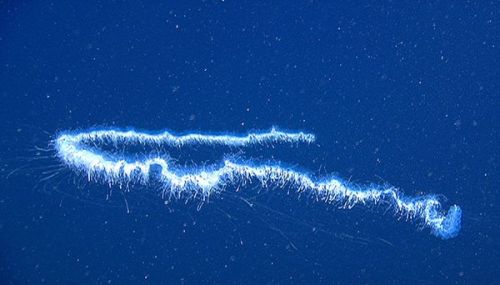Barreleye
First described in 1939, the unusual Pacific barreleye (Macropinna microstoma) is instantly recognisable by the transparent, fluid-filled dome that curves over its head like the cockpit of a fighter jet. The two green spheres within are actually the fish’s tubular eyes, while the dark capsules in front are the fish’s olfactory organs, responsible for smell. The barreleye lives in inky depths of over 600 metres, where sunlight fades to darkness, and its eyes have adapted remarkably. They’re so sensitive that they can detect faint silhouettes of prey passing overhead, and their green pigments are thought to filter out sunlight, allowing the barreleye to focus on its preys’ bioluminescent glow. It’s long been thought that these eyes are fixed, so the fish only has a tunnel-vision view of whatever is above its head, but researchers at theMonterey Bay Aquarium Research Institute have shown that the eyes can rotate around 75 degrees, from a vertical to a horizontal position. Along with its large flat fins, this amazing vision allows the 15 cm fish maneuver precisely and capture prey with its small pointed mouth. Interestingly, the barreleye shares its deep-sea habitat with many kinds of jellies, including the siphonophore, which grows to over 10 metres and trails out thousands of stinging tentacles like drift nets to capture prey. Researchers think that one of the barreleye’s feeding methods is to carefully manoeuvre among the siphonophore’s tentacles to steal its prey, and the transparent dome shields the fish’s eyes from the stinging tentacles.




No comments:
Post a Comment